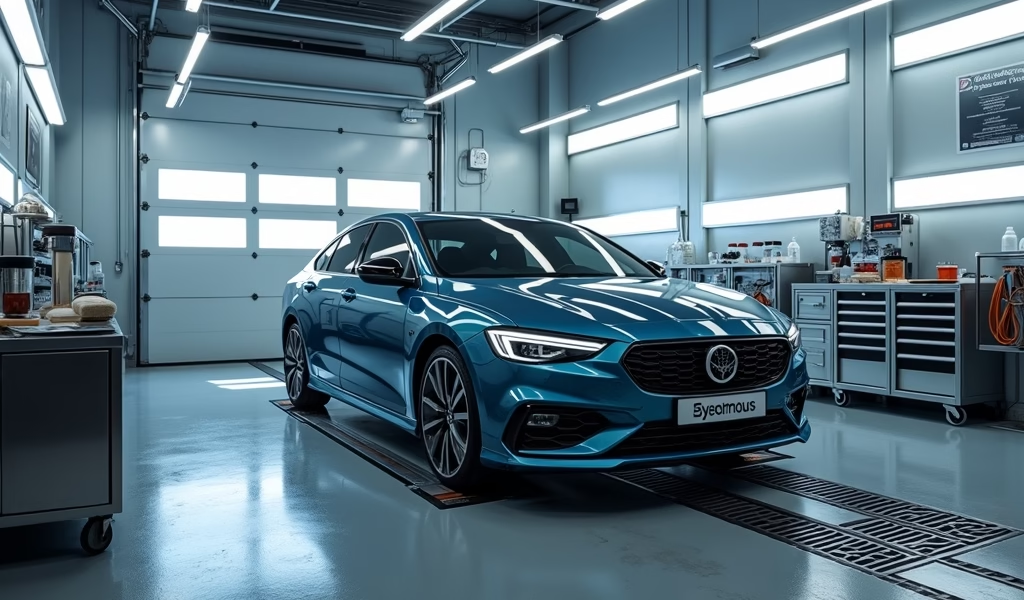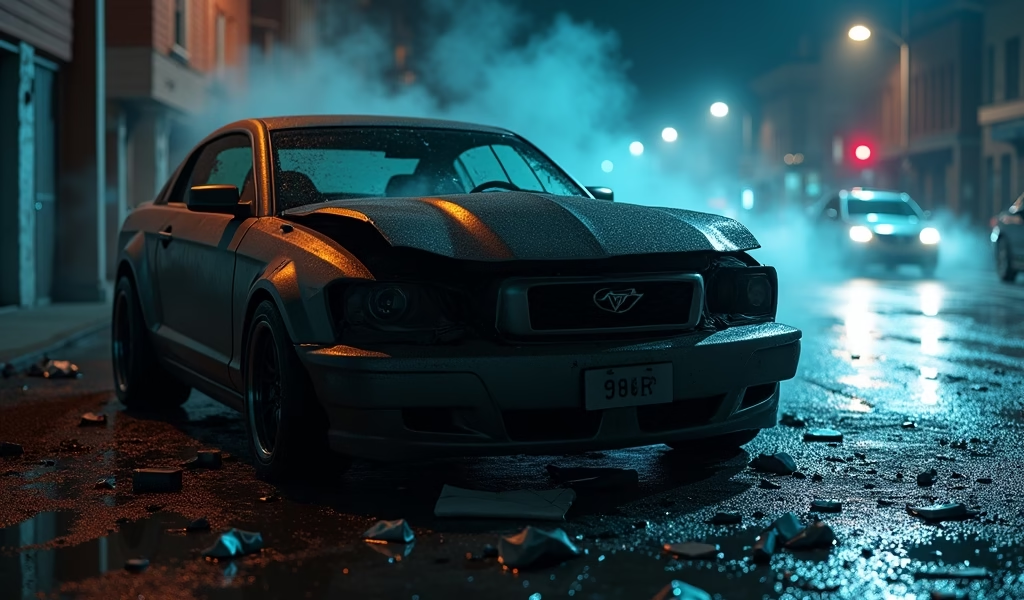Overview
This article outlines five essential actions after a hit-and-run accident: immediate documentation, filing a police report, getting a professional vehicle inspection, seeking medical evaluation, and gathering witness statements and surveillance footage. It emphasizes the importance of specialized legal representation to navigate these complex cases and secure proper compensation, even when the responsible driver cannot be identified.
Table of Contents
- Understanding Hit and Run Accidents
- The Importance of Legal Representation After a Hit and Run
- Treatment #1: Immediate Documentation and Evidence Collection
- Treatment #2: Filing a Comprehensive Police Report
- Treatment #3: Thorough Vehicle Inspection by a Certified Mechanic
- Treatment #4: Prompt Medical Evaluation
- Treatment #5: Gathering Witness Statements and Surveillance Footage
- Choosing the Right Hit and Run Lawyer
- Conclusion
- Frequently Asked Questions
Understanding Hit and Run Accidents
The jarring impact of metal striking metal, followed by the bewildering realization that the responsible driver has fled the scene, creates a uniquely frustrating situation for accident victims. Hit and run incidents—where a driver causes damage or injury and then departs without providing identification or rendering aid—leave victims in a precarious position filled with uncertainty and questions.
These incidents occur with alarming frequency across American roadways. According to the AAA Foundation for Traffic Safety, approximately 11% of all reported crashes involve hit and run drivers, with that percentage climbing even higher in urban environments. The psychological impact compounds the physical damage, as victims must navigate both vehicle repairs and legal complexities without a clearly identified responsible party.
As a master mechanic with over two decades of collision repair experience, I’ve witnessed firsthand how proper post-accident procedures significantly influence both vehicle restoration outcomes and legal resolutions. The critical period immediately following a hit and run incident demands specific “treatments” that address both your vehicle’s condition and your legal standing.
The Importance of Legal Representation After a Hit and Run
When the dust settles after a hit and run collision, the absence of the responsible party creates a complex legal landscape that differs substantially from typical accident scenarios. Standard procedures for exchanging insurance information become impossible, shifting the burden of investigation and compensation pursuit squarely onto your shoulders—unless you secure appropriate representation.
A specialized hit and run lawyer serves as both navigator and advocate through this challenging terrain. These legal professionals possess intricate knowledge of uninsured motorist provisions, insurance subrogation rights, and investigative techniques specifically applicable to absent-party scenarios. Their expertise transforms what might seem like a hopeless situation into a structured pursuit of rightful compensation.
Having collaborated with numerous legal professionals throughout my mechanical career, I’ve observed that accident victims with specialized legal representation typically receive more comprehensive vehicle repairs and medical treatment. The expertise of a hit and run attorney extends beyond courtroom advocacy to include practical guidance on preserving evidence, documenting damage, and avoiding common pitfalls that might compromise your claim.

Treatment #1: Immediate Documentation and Evidence Collection
The moments following a hit and run accident constitute a critical window for preserving evidence that may prove decisive in your case. Your vehicle becomes both victim and witness, carrying temporary marks that connect the fleeing vehicle to your damages. As a mechanic who’s examined thousands of collision-damaged vehicles, I can attest that properly documented evidence often makes the difference between successful claims and denied compensation.
Begin by photographing your vehicle from multiple angles, ensuring you capture:
- Close-up images of all visible damage
- Wide shots showing the vehicle’s position relative to the road
- Any transferred paint, metal fragments, or other debris
- Tire marks on the road surface
- Environmental conditions that may have contributed to the incident
Document the scene methodically, working from general to specific. Use a common object like a coin placed in the frame to establish scale in close-up photographs. If safe to do so, collect any vehicle fragments left behind—these components sometimes contain serial numbers or manufacturing marks that can help identify the fleeing vehicle.
Modern smartphones provide exceptional photographic capabilities, but their true value lies in the metadata they automatically capture. Each image contains embedded information about exact location, time, and date—details that strengthen the credibility of your documentation when presented to insurance adjusters or in legal proceedings.
Treatment #2: Filing a Comprehensive Police Report
Contacting law enforcement immediately after a hit and run isn’t merely advisable—it’s essential for establishing an official record of the incident. Police reports serve as foundational documents in subsequent legal proceedings and insurance claims, lending credibility to your account and initiating official investigative measures that might identify the responsible party.
When interacting with responding officers, provide meticulous details about the incident, including:
- Precise time and location of the collision
- Any identifying features of the fleeing vehicle (make, model, color, distinguishing characteristics)
- Direction of travel when the vehicle departed
- Partial or complete license plate information, if observed
- Description of the driver or passengers, if visible
- Names and contact information for any witnesses
Request a copy of the police report for your records, noting the report number and the responding officer’s name and badge number. This documentation establishes a critical timeline that insurance companies rely upon when processing claims. Most jurisdictions maintain specific reporting requirements for hit and run incidents—failure to file within designated timeframes (typically 24-72 hours) may compromise your ability to pursue certain legal remedies.
Treatment #3: Thorough Vehicle Inspection by a Certified Mechanic
As a certified collision repair specialist, I cannot overemphasize the importance of professional inspection following a hit and run incident. While visible damage commands immediate attention, the most consequential damage often lurks beneath the surface—compromised structural components, misaligned suspension systems, or damaged restraint sensors that remain invisible to untrained observers.
A comprehensive mechanical inspection should include:
- Frame and unibody structural assessment using calibrated measuring equipment
- Wheel alignment and suspension component evaluation
- Diagnostic scanning of vehicle computer systems to identify fault codes
- Inspection of supplemental restraint system components (airbag sensors, pretensioners)
- Examination of drivetrain and powertrain components for collision-related damage
Select a repair facility with appropriate certification credentials, ideally one recognized by your vehicle’s manufacturer. Request a detailed written assessment that includes both observed damage and recommended repairs, complete with itemized cost estimates. This documentation proves invaluable when negotiating with insurance companies or pursuing compensation through legal channels.
From my experience, professionally documented vehicle assessments typically identify 30-40% more damage than cursory visual inspections. This thorough approach ensures comprehensive repair while simultaneously strengthening your position when pursuing financial recovery through insurance claims or legal action.

Treatment #4: Prompt Medical Evaluation
Vehicle bodies and human bodies share an important characteristic following collisions: damage isn’t always immediately apparent. Just as mechanical problems may manifest days after an accident, physical injuries often follow delayed presentation patterns that can complicate both medical treatment and legal claims.
Seek medical evaluation promptly, even if you feel relatively unharmed. Modern vehicles absorb significant impact forces through engineered crumple zones and restraint systems, but these protective features don’t eliminate injury risk—they merely transform how trauma manifests in the human body. Common delayed-onset conditions include:
- Cervical spine injuries (whiplash) that manifest 24-72 hours post-impact
- Traumatic brain injuries with subtle initial symptoms
- Internal soft tissue damage that progresses gradually
- Musculoskeletal injuries masked initially by adrenaline
From a mechanical perspective, your body deserves the same detailed diagnostic approach as your vehicle. Medical documentation establishes crucial causation between the collision event and subsequent symptoms—a relationship that becomes increasingly difficult to prove as time passes. CDC research indicates that prompt medical intervention significantly improves outcomes for collision-related injuries while simultaneously creating the documentation essential for insurance claims.
Treatment #5: Gathering Witness Statements and Surveillance Footage
In the age of ubiquitous surveillance and smartphone cameras, hit and run incidents rarely occur without some form of digital documentation. Modern investigations extend beyond traditional witness statements to include electronic evidence that may capture crucial details about the fleeing vehicle.
Potential sources of supporting evidence include:
- Statements from witnesses who observed the collision
- Traffic camera footage from nearby intersections
- Security camera recordings from adjacent businesses
- Doorbell camera footage from nearby residences
- Dashboard camera recordings from other motorists
When collecting witness information, obtain complete contact details and brief statements while memories remain fresh. For electronic evidence, act quickly—many surveillance systems automatically overwrite footage after predefined periods, typically 24-72 hours. Your hit and run lawyer can issue preservation letters that legally obligate businesses to maintain relevant recordings pending formal investigation.
Throughout my career, I’ve observed numerous cases where seemingly minor surveillance details provided the crucial link between vehicle damage and the responsible party. A partial license plate, distinctive vehicle modifications, or even a business logo captured on camera has often transformed untraceable incidents into successful recovery actions.
Choosing the Right Hit and Run Lawyer
Selecting appropriate legal representation following a hit and run incident requires consideration of specialized expertise rather than general legal credentials. These cases present unique challenges—identifying unknown parties, navigating complex insurance provisions, and assembling compelling evidence from fragmentary sources—that demand specific experience and resources.
When evaluating potential attorneys, consider these essential qualities:
- Specific experience with hit and run cases, not merely general accident litigation
- Demonstrated success securing compensation through uninsured motorist claims
- Established relationships with accident reconstruction specialists and investigators
- Transparent communication regarding fee structures and potential outcomes
- Willingness to pursue multiple compensation avenues simultaneously
The most effective hit and run attorneys maintain collaborative relationships with mechanical experts who understand both technical damage assessment and the evidentiary value of vehicle examination. This mechanical-legal partnership creates comprehensive case development that addresses both the physical realities of collision damage and the legal pathways to compensation.
Conclusion
The aftermath of a hit and run accident presents a challenging convergence of mechanical, medical, and legal considerations. By implementing these five essential treatments—thorough documentation, police reporting, professional inspection, medical evaluation, and evidence gathering—you establish both the foundation for vehicle recovery and the framework for legal resolution.
As a mechanic who’s witnessed countless vehicles arrive bearing the scars of hit and run incidents, I can affirm that the actions taken during the initial hours significantly influence both repair quality and compensation outcomes. The synergy between proper vehicle treatment and appropriate legal representation transforms what might seem like an insurmountable situation into a manageable process with defined pathways to resolution.
Remember that your vehicle represents both significant financial investment and essential transportation. It deserves comprehensive care following trauma, just as you deserve thorough medical attention and appropriate legal advocacy. By approaching the situation methodically through these five treatments, you protect both your automotive asset and your legal rights during a challenging time.
Frequently Asked Questions
What should I do immediately after a hit and run accident?
Ensure your safety, document everything with photographs, and contact police immediately. Collect contact information from any witnesses and seek medical attention even if injuries seem minor.
How soon should I contact a hit and run lawyer?
Contact a specialized attorney within 24-48 hours of the incident for optimal case development. Early legal involvement helps preserve critical evidence and ensures all filing deadlines are met.
Can I still receive compensation if the hit and run driver is never identified?
Yes, compensation remains possible through your uninsured motorist coverage if you carry this protection. A specialized attorney can navigate these claims even when the responsible party remains unidentified.
Will my insurance rates increase after a hit and run accident?
In most states, insurance rates should not increase for claims where you were not at fault. Many states have specific regulations protecting consumers from rate increases for not-at-fault accidents, including hit and runs.
What evidence is most valuable in solving hit and run cases?
Surveillance footage, partial license plate information, and paint transfer evidence typically provide the strongest investigative leads. Physical vehicle fragments with serial numbers or manufacturing marks can also help identify the fleeing vehicle.


Pingback: Hit and Run Attorney: 7 Proven Car Fixes - knowsyourcar.com